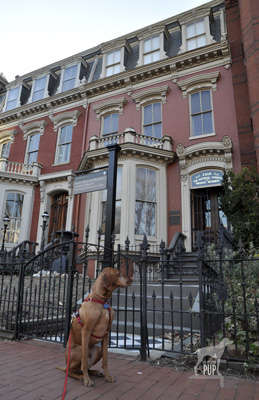
Every March the United States officially observes Women’s History Month—an outgrowth of both International Women’s Day and, in 1981, a congressional resolution for a “Women’s History Week.” In recent years the month has been ascribed a theme, with March 2012’s being “Women’s Education – Women’s Empowerment.”
One who personified this theme through her own works was Mary McLeod Bethune (1875 – 1955), daughter of former slaves, educator, key political influencer, and founder of the National Council of Negro Women (NCNW) in 1935. The Intrepid Pup recently visited two sites, both in the nation’s capital under the aegis of the National Park Service, to learn more.
The Mary McLeod Bethune Council House is tucked within a row of stately townhomes in a residential section of northwest Washington off Logan Circle. For the price of $15,500 in 1943, the property became not only Bethune’s residence but also the official headquarters for the NCNW. The site has been administered by the Park Service since 1994. On the day of our visit, we were welcomed by a college undergraduate serving in the Park Service’s Student Career Experience Program. She invited us first to listen to a recording of Bethune speaking at an event in 1955 just a few months prior to her death. Hearing Bethune’s actual voice was a good introduction to someone we previously knew very little about, and it gave us the impression of a strong yet humble woman with a commanding presence. The ranger gave a brief orientation on the highlights of the home’s history, encouraging us to explore the rooms and interpretive displays on the first two floors. She checked on us several times to answer our questions. We had the house to ourselves that weekend afternoon. Just beyond the reach of the tour bus throngs on the National Mall, this historic site is not a high-traffic destination. Yet contributing to its appeal is the very fact that in providing a personal, intimate experience it is in marked contrast with its crowded counterparts. Our knowledge and appreciation of Bethune expanded exponentially as we uncovered details about her upbringing in poverty and perseverance in starting Florida’s Daytona Educational and Industrial Training School for Negro Girls (now Bethune-Cookman University) in 1904 fueled only by desire and $1.50. It seems fitting that today the university offers a master’s degree program in transformative leadership. It was also fascinating to learn of Bethune’s role in championing African American women’s involvement in the war effort and of her official capacities in the Franklin D. Roosevelt and Harry S. Truman administrations.
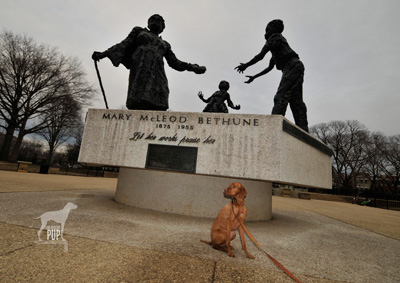
About a mile and half away from the Council House as the crow flies is Bethune in monumental form. Sculpted in bronze by New York artist Robert Berks (1922-2011), the statue grouping emphasizes Bethune as educator, literally and figuratively imparting her legacies to a boy and girl. Around the base are inscribed excerpts from her last will and testament which Bethune also holds in her outstretched left hand. The oft-repeated refrain “I leave you…” is completed by such powerful concepts as “hope”, “a thirst for education,” and “racial dignity.” The monument itself has an interesting history. It’s located in Lincoln Park 11 blocks due east of the U. S. Capitol Building. Book-ending the rectangular plot of open space maintained by the Park Service are the Bethune memorial and, sited directly opposite, the famous Freedmen’s Memorial Monument to Abraham Lincoln (also known as the “Emancipation Grouping”) which was paid for entirely by freed slaves and sculpted by Thomas Ball in 1875. The original intent had been for the dedication of a Bethune memorial to coincide with the 100th anniversary of Lincoln’s Emancipation Proclamation in 1963, but the entire project was delayed. With funding from the NCNW, the Bethune monument was ultimately unveiled in 1974 on what would have been Bethune’s 99th birthday. Adding the Bethune memorial to the park also resulted in turning the Freedman’s Memorial 180 degrees so the two groupings would face each other.
If the Bethune memorial’s roughly faceted, somewhat abstract style looks familiar, it’s because Robert Berks sculpted several high-profile pieces. In DC alone, one can most readily see other examples of his handiwork in the 22-foot seated Albert Einstein memorial (1979) outside the National Academy of Sciences and in the 8-foot, 3000-pound bronze bust of John F. Kennedy (1971) gracing the Grand Foyer of The John F. Kennedy Center for the Performing Arts. In a city dotted with literally hundreds of statues, monuments, and memorials, Berks’ Bethune sculpture represented the first honoring a woman (let alone an African American woman) installed on public park land in the nation’s capital.
Dogging the Details
38°54′29.31″N, 77° 1′50.29″W
Mary McLeod Bethune Council House, Washington, DC
38°53′23.19″N, 76°59′21.13″W
Mary McLeod Bethune Memorial, Lincoln Park, Washington, DC
 There is no fee charged to explore the Bethune Council House. While dogs understandably aren’t allowed inside, the neighborhood itself has sidewalks and is great for dog-walking.
There is no fee charged to explore the Bethune Council House. While dogs understandably aren’t allowed inside, the neighborhood itself has sidewalks and is great for dog-walking.
Lincoln Park is exceptionally dog-friendly and what earns this Bethune-themed expedition a “2” on the Wag-a-meter. In fact, the park’s entire center concourse is basically one big unfenced and very popular dog run. So long as your dog plays well with others, it’s among the top spots to rub noses with the canine denizens of Capitol Hill. During our visit, Tavish encountered 3 weimaraners, a doberman, a rottweiler, a basset hound, a Wheaton terrier, a miniature greyhound, a Boston terrier, and a shepherd mix.
Important to note is that Lincoln Park is not an officially-designated city dog park. There are trash cans, but bring your own your poly bags to clean up after your dog.

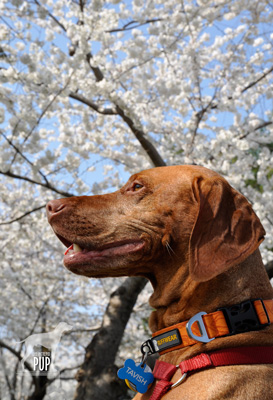
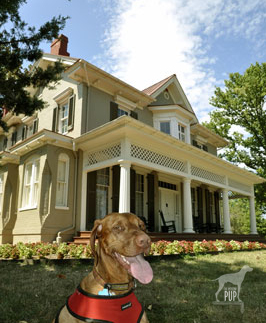 February is
February is 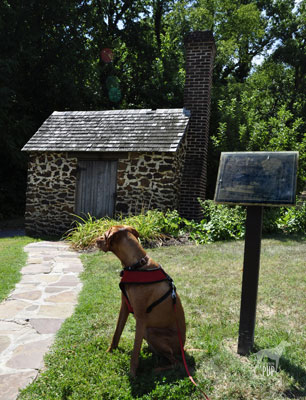 On the day of our visit, we had an exceptionally knowledgeable and engaging young ranger. He deftly hit the highlights of Douglass’s public life but also gave insights into Douglass’s more personal side, pointing out Douglass’s extensive library, the violin he played, and the free weights he used to maintain his personal fitness. Referencing the various portraits throughout the house, the park ranger expounded upon Douglass’s social circle and relationships with abolitionists William Lloyd Garrison and John Brown; Presidents Lincoln, Grant, Hayes and Harrison; Underground Railroad champion Harriet Tubman; and abolitionist and suffragist Elizabeth Cady Stanton. He explained the importance of Douglass’s family life and—after wife Anne’s death in 1882—controversial second marriage in 1884 to Helen Pitts, a white woman and women’s rights activist and publisher. And we learned-lesser known details, such as Douglass’s appointments as Charge’ d’Affaires for Santo Domingo and as Minister to Haiti. Before departing, we checked out the rustic outbuilding at the rear of the property. It’s a reconstruction of Douglass’ self-proclaimed “Growlery.” Evocative of a lion’s lair, it served as Douglass’ personal retreat for writing and study.
On the day of our visit, we had an exceptionally knowledgeable and engaging young ranger. He deftly hit the highlights of Douglass’s public life but also gave insights into Douglass’s more personal side, pointing out Douglass’s extensive library, the violin he played, and the free weights he used to maintain his personal fitness. Referencing the various portraits throughout the house, the park ranger expounded upon Douglass’s social circle and relationships with abolitionists William Lloyd Garrison and John Brown; Presidents Lincoln, Grant, Hayes and Harrison; Underground Railroad champion Harriet Tubman; and abolitionist and suffragist Elizabeth Cady Stanton. He explained the importance of Douglass’s family life and—after wife Anne’s death in 1882—controversial second marriage in 1884 to Helen Pitts, a white woman and women’s rights activist and publisher. And we learned-lesser known details, such as Douglass’s appointments as Charge’ d’Affaires for Santo Domingo and as Minister to Haiti. Before departing, we checked out the rustic outbuilding at the rear of the property. It’s a reconstruction of Douglass’ self-proclaimed “Growlery.” Evocative of a lion’s lair, it served as Douglass’ personal retreat for writing and study.

 Today's
Today's 








 to U.S. president Gerald Ford from Ford’s daughter and the White House photographer.
to U.S. president Gerald Ford from Ford’s daughter and the White House photographer.
